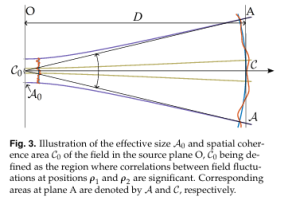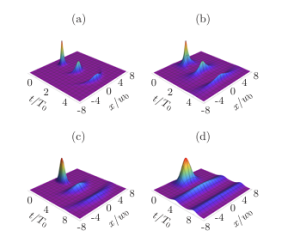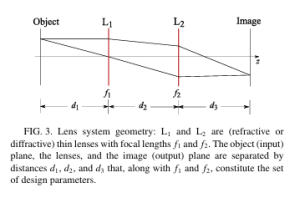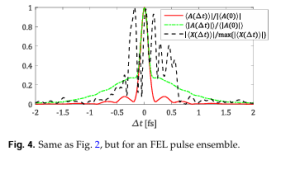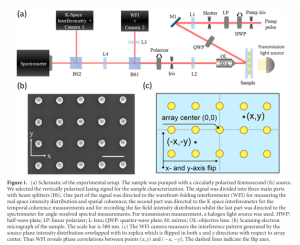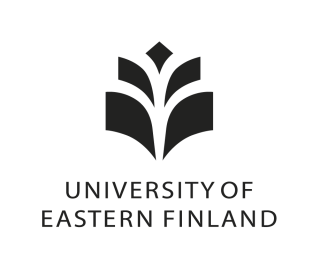
Measurement of spatial coherence of light
J. Turunen et. al. | J Opt Soc Am A Opt Image Sci Vis. 2022 Dec 1;39(12):C214-C239., November 2022 | Article pdf
- Spatial coherence is a fundamental property of light. This paper presents a qualitative discussion on how to understand spatial coherence and it’s evolution upon propagation.
- Spatial coherence can be measured in multiple ways. Here we discuss a large number of possible methods.
- The most notable method is the wavefront folding interferometer developed at UEF.
Nonstationary optics: tutorial
M. Koivurova et. al. | J. Opt. Soc. Am. A 41, 615-630 (2024), March 2024 | Article pdf
-
This paper sets forth the mathematical formulation of nonstationary optics, with an emphasis on pulsed beams.
-
Basic properties of pulses, such as pulse length and shape, propagation, and spatiotemporal coupling are discussed in detail.
-
Some experimental aspects are highlighted, such as spectral scale transformations, which allow ideal focusing.
-
Common pulse measurement schemes are discussed in relation to partial coherence.
Partially coherent isodiffracting pulsed beams
M. Koivurova et. al. | Phys. Rev. A 97, 023825, February 2018 | Article pdf
-
Isodiffracting pulsed beams are generated in common spherical mirror laser cavities.
-
We developed a closed form analytical framework to discuss their properties.
-
In particular, they exhibit coupling between space and time, such that partial spatial coherence leads to reduced temporal coherence.
Spectral scale transformations of nonstationary optical fields
J. Laatikainen et. al. | Phys. Rev. A 106, 023515, August 2022 | Article pdf
-
We discuss general methods for producing desired spectral scale transformations applicable to nonstationary fields.
-
As a particular case, we transform isodiffracting pulsed beams into spatiotemporally separable fields and spectrally invariant fields.
-
This allows one to either modulate the spatial or temporal properties individually, or produce fields with the same spectrum in all observation directions.
-
We also discuss hybrid refractive-diffractive imaging systems which are able to produce these transformations accurately in real experimental settings.
Interferometry and coherence of nonstationary light
M. Koivurova et. al. | Opt. Lett. 44, 522-525 (2019), January 2019 | Article pdf
-
We establish what type of coherence information one can attain from time-integrating measurements.
-
The usual field autocorrelation is compared to an alternative implementation, as well as a field cross-correlation.
-
We employ numerical pulse ensembles of exotic light sources with nontrivial coherence properties: supercontinuum light and free-electron lasers.
Polarization dependent beaming properties of a plasmonic lattice laser
B. Asamoah et. al. | New J. Phys. 23, 063037, June 2021 | Article pdf
-
We perform experimental studies on the beaming properties of a plasmonic lattice laser.
-
Such light sources do not employ regular laser cavities, but instead a lattice of plasmonic nanoparticles, overlaid with laser dye.
-
This is the first detailed analysis of beam quality in such systems and reveals the underlying physics of the observed polarization asymmetry.

